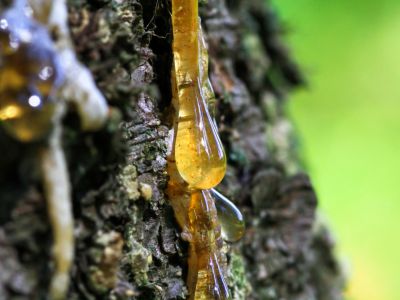What Does Tree Sap Contain?
Many people are startled by the sight of sap on their tree. They may wonder what is tree sap and what does tree sap contain? Xylem sap consists primarily of water, along with hormones, minerals, and nutrients. Phloem sap consists primarily of water, in addition to sugar, hormones, and mineral elements dissolved within it. Tree sap flows through sapwood, which produces carbon dioxide. Sometimes this carbon dioxide causes pressure to build up within the tree. If there are any wounds or openings, this pressure will eventually force the tree sap to ooze from the tree. Oozing tree sap can also be heat related. In early spring, while many trees are still dormant, the fluctuation of temperatures may affect the flow of tree sap. For instance, warmer weather produces pressure within the tree. This pressure can sometimes cause the tree sap to flow from the tree through openings produced from cracks or injury. During cold weather, when temperatures fall below freezing, the tree pulls water up through the roots, replenishing the tree sap. This cycle continues until the weather stabilizes and is quite normal.
Tree Sap Problems
Sometimes trees suffer from unnatural blistering or oozing of sap, which may be caused by numerous things such as disease, fungus, or pests. On average, however, trees do not typically leak sap unless damaged in some way.
Bacterial Canker is a disease afflicting trees that have been previously injured by impact, pruning, or cracks from freezing, allowing bacteria to penetrate the tree through these openings. Bacteria cause the tree to produce abnormally high sap pressure, which forces fermented sap out to flow from cracks or openings of the infected tree. Affected trees may have wilt or dieback on the branches. Slime flux is another bacterial problem characterized by tree sap oozing. Sour-smelling, slimy-looking sap leaks from cracks or wounds on the tree, turning gray as it dries. Root rot fungus generally occurs when either the trunk of the tree is too moist from water hitting it or the soil has been overly saturated for an extended period. Insect pests, like borers, are often attracted to tree sap. Fruit trees are most likely afflicted with borers. Borers may be present if there is a noticeable gummy-like sap oozing at the top of dying bark and sawdust at the base of the tree.
Tree sap can also be difficult to remove. Read here about how to remove tree sap.
